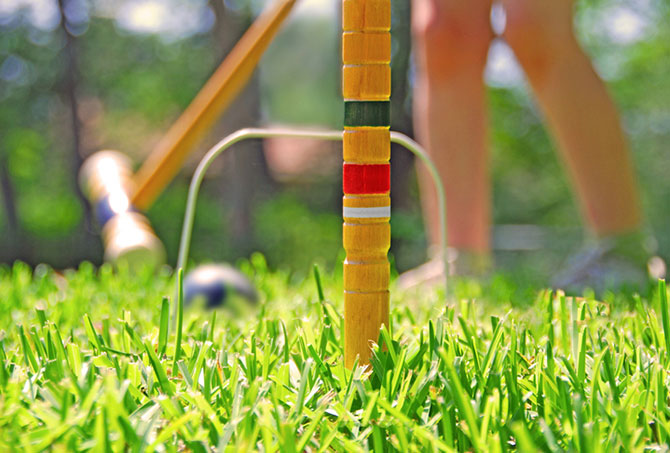Woodworkers Give New Life to Heirloom Croquet Set
Croquet is a very old game, widely known, and played in France since the eleventh century. Its name was “croche,” which means shepherd’s crook. Borrowed by the British around 1300, it was modified over the centuries: The Scots made golf out of it, the Irish lay claim to it, the Swiss today have serious tournaments — as do some twenty countries. In 1868, to satisfy the craze for croquet, the All England Croquet Club was formed in the small town of Wimbledon, about seven miles from the center of London. Seven years later the burgeoning sport of tennis took over, and the club was renamed the All England Lawn Tennis and Croquet Club. The rest is history. The name Wimbledon is synonymous with the sport of tennis, and The Championship that began in 1877 remains the premier of all the majors. There are still three croquet courts on the grounds; they are particularly popular among tournament tennis players past their prime.
One of our PVE team members called the Termite Hot Line and asked if we would be interested in refinishing a croquet set. The set had belonged to her Dad. It was more than 50 years old and in bad condition. She recalled playing with it when she was young, and the set was not new then. She took a few pictures of the set and forwarded them with her request. Her description of “pretty ragged shape” was unarguably accurate.
The storage rack’s wood was rotten and would need replacing, the wooden balls and mallets would need to be stripped, stained and striped — not an overly difficult project but time intensive. Most croquet sets today are made of plastic, with the high-end ones made of hardwood. A high-end six-player maple wood set with rack is usually Amish made and goes for $350 and up. Tournament sets with leather-wrapped handles, precision wickets, accurate weights are priced at $600 to $700. She added that there was no hurry to complete the project, and that was the clincher. We accepted the challenge.
The old rack was disassembled and used as a pattern. New hardwood was carefully crafted and given several coats of red paint, preceded by a primer, to give it weatherability. The metal rods were stripped and polished to a gleaming shine. Balls, mallets and pegs were prepped with a wire grinder, an orbital sander, and then hand sanded to remove the paint and smooth the weathered edges. The pieces were taped where the stripes were to be painted, to keep the stain off these areas. Mallet heads and shafts all received a golden oak stain. Then the striping: painting the colored stripes needed a sure hand and a large measure of patience. Overall, the refurbishment was a welcome success. The stain will protect the wood, give it a showroom look, and the different colored stripes are professionally bright and cheerful. As they say at the All England Club: “Croquet anyone?”



